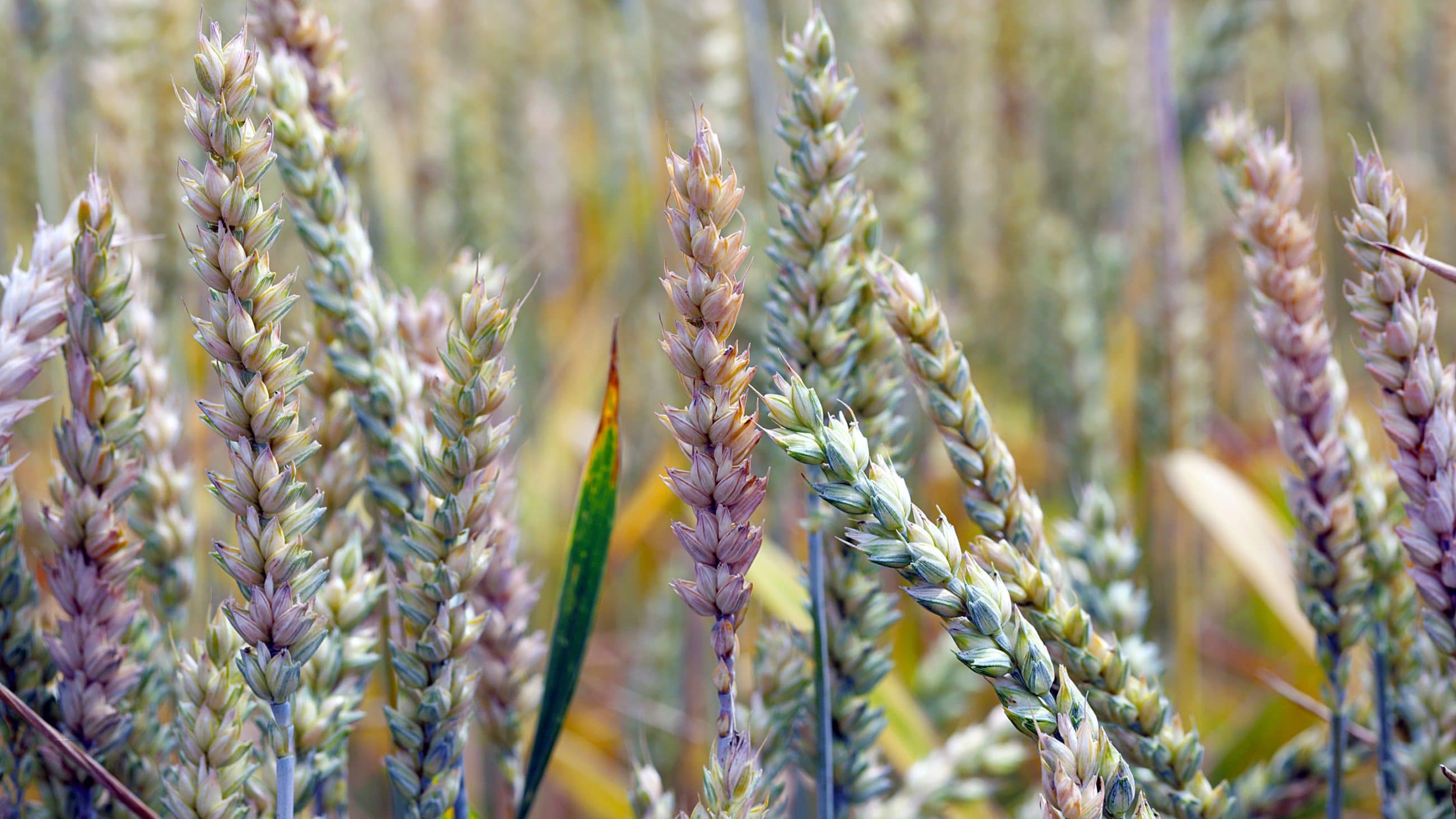VIGOROX® Ceres combats Fusarium fungi in malting barley
Evonik Active Oxygens is taking the fight to Fusarium fungi with a special washing process: These microorganisms primarily infest wheat and barley crops and can render large amounts of the harvest unusable for any further processing. The new washing process, which contains the active ingredient peracetic acid, can make a significant contribution to reducing losses in quality and yield. And that is not all, as the washing process is also sustainable in three ways…
The next time you open a beer and foam comes out, it may not necessarily be because the bottle was agitated. In fact, it may actually be due to a beverage-spoiling microorganism known as Fusarium wilt fungi. This pathogen can affect a wide range of grains and the consequences can often be disastrous. Affected grain heads wilt and die prematurely, rendering them useless for further processing into foods.
The “gushing” is just one effect among many, with others including a spoiled taste and flavor of the fungi-infected beer. Fusarium fungi also produce toxic substances, such as deoxynivalenol (DON), which can be a hazard to humans and animals.
Threshold values for DON
As high concentrations of DON can be hazardous to health, threshold values for food have been defined in Europe for the fungal toxin. These values range from 1,250 µg/kg for unprocessed grains to 200 µg/kg in baby food. The Food and Drug Administration (FDA) in the USA has issued advisory levels for DON.
Enormous losses due to Fusarium
Annual losses around the world due to Fusarium wilt are enormous, with estimates stating that up to 25 percent of grains for foods and feedstocks are infected with fusaria and other fungal toxins. Between 1998 and 2000, the estimated losses due to fusaria in wheat and barley were approximately USD 2.7 billion. In the state of Pennsylvania, Fusarium is the leading wheat and barley infestation. This is a considerable problem for all industry sectors which process grains for foods. Bread, pasta, cornflakes and polenta, for example, are just some of the foods that frequently contain Fusaria toxins.
Malthouses also have to deal with the fungus. They produce barley malt mainly for beer breweries, but also serve other industries such as distilling, animal nutrition and cereals/food.
Climate change is partially to blame for spreading the infestation, as the increasing heat and humidity create ideal conditions for the fungus to thrive. “There were years in which maltsters did not have enough barley of proper quality to satisfy demand – and Fusaria was to blame,” says John Wallace, Director Business Development Americas at Evonik Active Oxygens.
A threefold sustainable process
Evonik Active Oxygens, a global manufacturer of hydrogen peroxide, peracetic acid (PAA) and persulfate products, has developed an effective and sustainable process which can eliminate Fusaria fungi from grains, an approach that makes a significant contribution to reducing losses in quality and yield. In an effort to apply the technology against the fungus, Evonik is working together with various malthouses in the USA and Canada, while collaborations in Europe are in the pipeline.
Malting is a key element in the millennia-old art of beer-brewing and consists of three steps:
- steeping the grain,
- germination, during which the grain starch is fermented to malt and
- the final drying, or kilning, which enables the malt to be preserved.
Prior to steeping, the grain is soaked in Evonik’s solution which contains very low concentrations of peracetic acid (up to 1745 parts per million). This solution is marketed under the brand VIGOROX® Ceres, named after Ceres, the ancient Roman goddess of agriculture. The antimicrobial effects of peracetic acid have been known for over 100 years, with scientists reporting on the discovery of the antimicrobial properties of peracetic acid in a specialist publication from 1902.
“It is important to remove the contamination without the process having any unwanted effects on the grain’s germination capacity and other quality characteristics”, Wallace adds. “We are working with a foodstuff which is subject to very strict requirements. Complying with these requirements while still achieving a sufficient effect, is a balancing act which we enjoy tackling with our many years of experience in PAA applications for the food sector.”
Joining forces to combat the beer-spoiling microorganism
Evonik Active Oxygens collaborates with malthouses on numerous levels: Employees at Evonik conduct laboratory and field tests with the malthouses in order to obtain a better understanding of how PAA affects grains. The company also provides equipment and information. The team collaborated closely with the Hartwick College Center for Craft Food and Beverage in New York, an industry leading resource for scientific matters regarding malting and brewing.
The team has already enjoyed its first successes. In the past, brewing processes tolerated a maximum DON level of 1 mg per kg of grain. Higher levels in barley meant the grain could not be used without risk of negative impacts on grain and beer quality.
However, thanks to the new, effective VIGOROX® Ceres process, grains of any DON level can now be pretreated in order to reduce DON to the maximum permissible concentration of 0.5 mg/kg, so that malthouses can use them for malting. “We are continuously optimizing our process and are on the right path towards ‘food-grade barley’”, Wallace states.
“Some of the very large malthouses could benefit by having tens of thousand of tons of grain available from a closer proximity, lowering their acquisition cost substantially, and saving hundreds of thousands of dollars individually, millions as an industry”, he says.
Additional applications for the sustainable washing process are conceivable, for example in grain mills and industrial bakeries – in other words, everywhere where the whole grain is processed into foods. And VIGOROX® Ceres is not only effective against Fusarium – the Roman goddess can also put an end to many other fungi, bacteria, yeasts and viruses.
